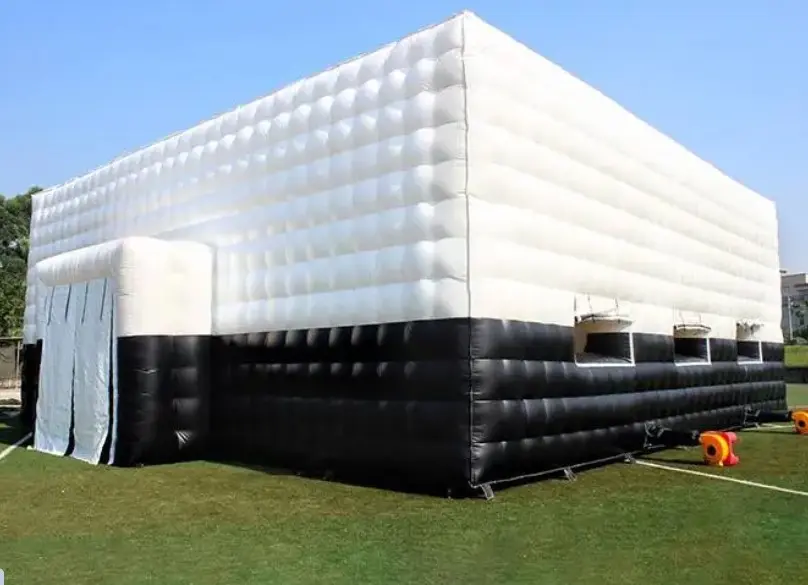In today’s fast-paced, multi-functional environments, the need for adaptable structures is more crucial than ever. One such remarkable solution is inflatable cubes. These versatile structures provide a flexible approach to creating temporary and impactful spaces for a wide range of applications. From event hosting and exhibitions to promotional spaces and even temporary shelters, inflatable cubes offer the ideal blend of portability and aesthetic appeal.
Inflatable cubes, with their innovative design, transform traditional perceptions of temporary spaces. Unlike conventional structures, inflatables are designed to be lightweight and easy to transport, enabling swift setup and dismantle. Thanks to advances in materials technology, modern inflatables can withstand various weather conditions, making them suitable for both indoor and outdoor use. This adaptability proves invaluable in dynamic settings where swift changes are necessary.
One of the most significant advantages of inflatable cubes is their customisability. These structures can be designed to incorporate brand elements, distinctive colours, and even complex architectural features. This customisable nature makes them particularly appealing for businesses aiming to create memorable brand experiences or for artists showcasing immersive installations. A unique space can captivate and engage, fostering meaningful interactions and leaving a lasting impact.
Moreover, the environmental influence of inflatable cubes cannot be ignored. Traditional construction methods often involve significant resource consumption and waste production. In contrast, inflatable structures are typically made from durable, reusable materials, reducing their environmental footprint. As they can be inflated or deflated promptly, they eliminate the need for permanent fixtures and minimise site disruption. This quality aligns inflatable cubes with growing calls for sustainable and eco-friendly event practices.
The temporary yet transformative nature of inflatable cubes is particularly attractive for a host of industries. In the realm of entertainment, for instance, they can be used to construct pop-up movie theatres, concert venues, or immersive art spaces. Meanwhile, the corporate sector utilises their potential for dynamic meeting spaces, brainstorming hubs, or pop-up retail experiences. Inflatable cubes are also popular in community events, providing shelter for market stalls, workshops, or temporary information centres.
Their versatility extends further into emergency applications, where speed and efficiency are paramount. Inflatable cubes can be rapidly deployed in disaster-stricken areas, providing quick access to shelters, medical clinics, or command centres. Their ease of transport and rapid setup can be lifesaving in scenarios where traditional building methods fail to meet emergency timelines.
In an era where experiential and temporary environments are in high demand, inflatable cubes offer a solution that is both practical and imaginative. Their ability to adapt to evolving needs while maintaining aesthetic appeal is unmatched by conventional construction methods. As the use of temporary structures becomes more widespread, the role of inflatable cubes is set to expand, providing innovative solutions across diverse settings.
Ultimately, inflatable cubes represent a shift in how spaces are perceived and utilised. They challenge the limitations of fixed architecture, demonstrating that temporary does not mean compromise. By offering a unique combination of adaptability, sustainability, and creativity, inflatable cubes are not just reshaping the landscape — they’re reinventing it. For those who dare to think beyond traditional borders, these structures offer a canvas for innovation, promising endless possibilities to create impactful spaces anywhere.
Also Read-Add Charm to Your Home with Custom Slate House Signs
